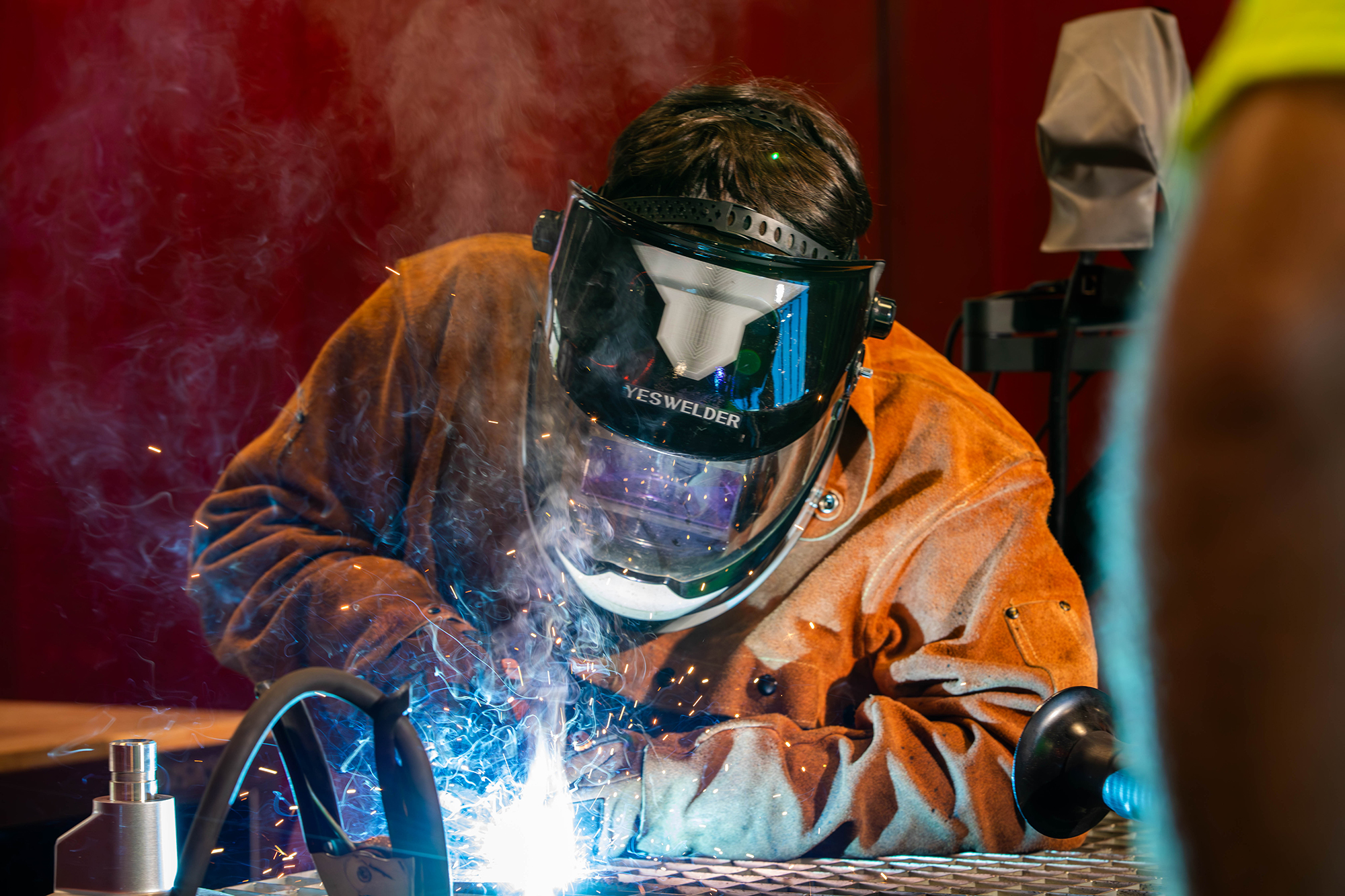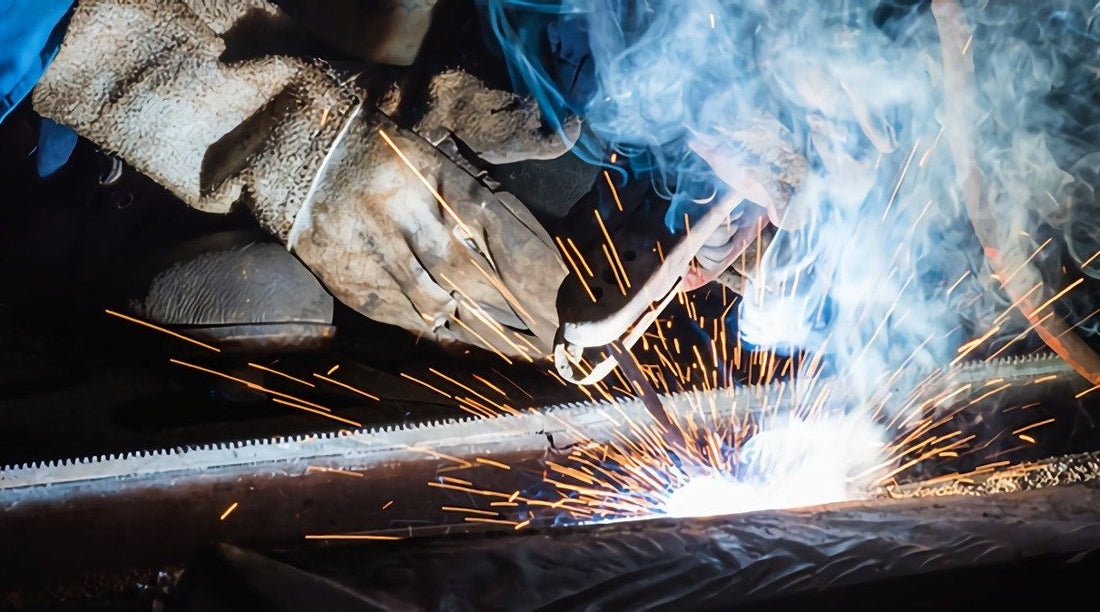Everything about Welding: Key Insights Into Techniques and Finest Practices for Success
Welding includes a range of strategies, each matched for certain products and applications. Recognizing these techniques, such as GMAW, SMAW, and TIG, is important for accomplishing perfect outcomes. The best equipment and security methods can not be neglected. As preparation and fixing play vital roles in the welding process, understanding these aspects can substantially boost the top quality of the end product. What are the vital variables that ensure an effective weld?
Understanding Different Welding Methods
Welding techniques include a selection of methods, each suited to specific applications and products. Among the most usual strategies are Gas Metal Arc Welding (GMAW), Shielded Metal Arc Welding (SMAW), and Tungsten Inert Gas Welding (TIG) GMAW, additionally called MIG welding, is preferred for its rate and flexibility, making it perfect for thin materials. SMAW, or stick welding, is preferred for its simpleness and effectiveness in exterior environments, particularly with thicker steels. TIG welding supplies precision and control, making it ideal for detailed job and non-ferrous metals (Belgrade). Each method has its one-of-a-kind advantages and considerations, enabling welders to select the finest approach based upon the job's demands, material type, and desired end results. Recognizing these techniques is necessary for successful welding
Important Welding Equipment and Devices
While various welding techniques call for specific abilities, the best equipment and tools are equally necessary for accomplishing quality results. Important welding tools consists of welding makers, which differ depending upon the strategy-- such as MIG, TIG, or stick welding. Protective equipment, consisting of gloves, aprons, and safety helmets, guarantees safety and security and convenience throughout the process. Additionally, components and clamps aid protect products in position, ensuring accuracy in welds. Consumables like welding poles, wire, and protecting gas are also critical elements that influence the high quality of the weld. Tools such as cutters and grinders facilitate surface area preparation and post-weld finishing, contributing to an expert outcome. Buying high-grade devices eventually improves the efficiency and effectiveness of welding jobs.
Security Practices in Welding
Correct security techniques are necessary in the welding industry to safeguard employees from possible risks. Welders have to put on ideal individual safety equipment (PPE), including helmets with correct shading, handwear covers, and flame-resistant apparel. Ample ventilation is essential to lower direct exposure to unsafe fumes and gases created throughout the welding process. Additionally, workers ought to be learnt the appropriate handling of welding tools to avoid accidents. Fire security steps, such as maintaining flammable materials away from the welding area and having fire extinguishers conveniently offered, are required. Normal inspections of equipment and work areas can help determine prospective dangers prior to they lead to crashes. By adhering to these safety practices, welders can develop a much safer working atmosphere and decrease dangers associated with their profession.
Preparing Products for Welding
Preparing products for welding is an important action that considerably affects the high quality and honesty of the end product (Welding). Correct prep work entails cleaning up the surfaces to remove contaminants such as corrosion, oil, and dirt, which can compromise the weld. Techniques such as grinding, sanding, or utilizing solvents are frequently used to attain a tidy surface. In addition, ensuring that the products fit together snugly is vital; spaces can cause weak welds. It's additionally essential to think about the placement and positioning of the parts, as this will certainly affect the convenience of welding and the final result. Lastly, selecting the suitable filler material and ensuring compatibility with the base steels is vital for attaining solid, reference sturdy welds
Tips for Achieving High-Quality Welds
Attaining premium welds needs interest to information and adherence to best techniques throughout the welding procedure. Correct joint preparation is essential, ensuring surfaces are tidy and complimentary from contaminants. Selecting the appropriate filler material and welding strategy based upon the base steels is essential for suitable bonding. Keeping regular travel rate and angle while welding can protect against flaws and promote harmony. In addition, managing warm input is important; excessive warmth can cause warping and deteriorated joints. If required, on a regular basis examining the welds throughout the procedure enables for prompt adjustments. Utilizing proper post-weld treatments, such as cleansing and anxiety relief, can boost the longevity and stability of the weld, inevitably making sure an effective outcome.
Repairing Typical Welding Issues
Welding typically provides challenges that can impact the high quality and integrity of the end product. Common concerns such as porosity, inconsistent weld beads, and getting too hot can develop, each requiring details repairing techniques. Understanding these issues is essential for welders to enhance their skills and attain ideal results.
Porosity Troubles Described
Although porosity can usually be forgotten, it remains a critical problem in welding that can endanger the honesty of a completed product. Porosity refers to the existence of small gas pockets within the weld bead, which can lead and damage the joint to premature failure. This issue usually arises from contaminants, dampness, or improper protecting gas protection throughout the welding procedure. To alleviate porosity, welders must validate that the base products are tidy and completely dry, make use of suitable shielding gases, and preserve consistent welding specifications. Consistently examining the devices and setting can likewise aid identify potential problems before they materialize in the weld. Dealing with porosity efficiently is crucial for achieving strong, sturdy welds that fulfill quality standards.

Irregular Weld Beads
Inconsistent weld beads can substantially affect the top quality and stamina of a finished product. Different elements add to this problem, consisting of incorrect traveling rate, wrong amperage setups, and irregular electrode angles. When the welder relocates too quickly, a bead might appear narrow and lack infiltration, while relocating as well gradually can trigger too much accumulation. Additionally, utilizing the wrong amperage can result in either undercutting or excessive spatter, both of which compromise weld honesty. The welder's technique, such as irregular torch activity, can likewise lead to uneven bead appearance. To minimize these troubles, welders should focus on keeping constant, regulated activities and ensuring proper equipment settings to accomplish harmony in their welds. Uniformity is crucial to attaining reputable and solid welds.
Overheating and Warping Issues
Too much warmth throughout the welding procedure can cause substantial getting too hot and contorting problems, impacting the structural honesty of the work surface. These troubles frequently manifest as distortion, which can jeopardize alignment and fit-up, making further assembly challenging. Variables contributing to overheating include the choice of welding parameters, such as voltage and travel speed, in addition to the kind of product being welded. To reduce these concerns, welders ought to keep constant traveling rate and appropriate heat input while checking the work surface temperature level. In addition, pre-heating or post-weld warm therapy can aid alleviate stresses brought on by rapid air conditioning - Fabrication. Routine inspection and adherence to best techniques are necessary in preventing getting too hot and making certain the durability and integrity of welded structures
Regularly Asked Questions
What Are the Job Opportunities in the Welding Industry?
The welding market offers diverse job chances, weblink including settings as welders, inspectors, instructors, and designers. Specialists can operate in manufacturing, building and construction, aerospace, and auto industries, taking advantage of solid need and affordable salaries in various roles.
How Can I Enhance My Welding Rate Without Sacrificing Top Quality?
To improve welding speed without sacrificing high quality, one ought to exercise effective techniques, maintain devices, enhance setups, and improve hand-eye control. Regular training and seeking comments can additionally significantly add to achieving quicker, high-grade welds.
What Qualifications Are Readily Available for Welders?
Numerous accreditations exist for welders, consisting of those from the American Welding Society (AWS), the National Facility for Building Education And Learning and Research (NCCER), and various industry-specific companies. These qualifications enhance employability and demonstrate skill efficiency.
Exactly How Does Welding Influence the Characteristics of Metals?
Welding influences the residential properties of metals by altering their microstructure, special info which can lead to adjustments in hardness, strength, and ductility. Warm input and air conditioning prices throughout the process significantly impact these product attributes.
Can I Bonded Dissimilar Metals Together?

Comments on “Repairing cracking in welded joints: tips from Montana Mobile Welding and Repair Fabrication”